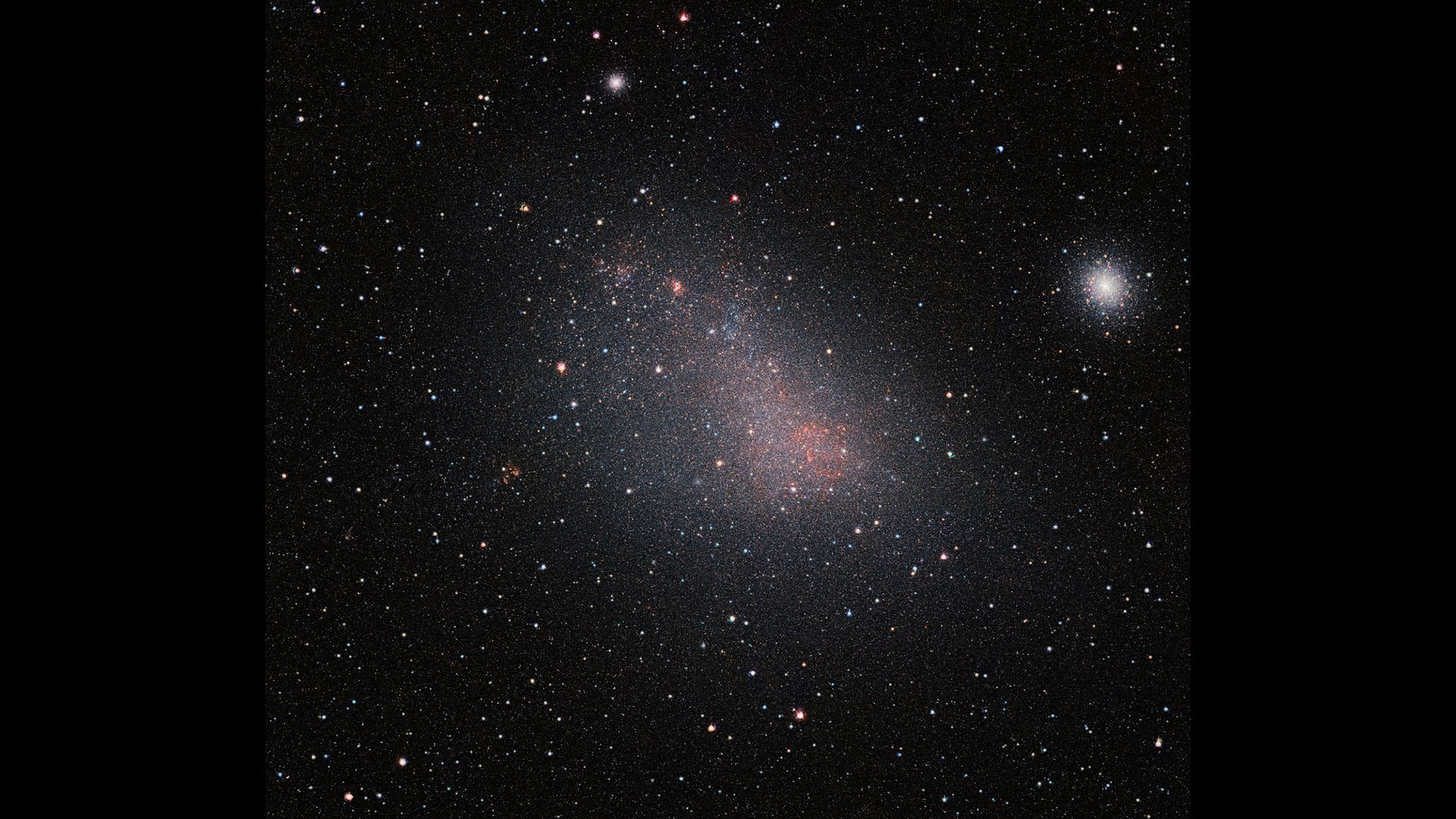One of the closest galaxies to the Milky Way is hiding a second galaxy behind it, new research reveals
New observations of the Small Magellanic Cloud show that it might actually be two galaxies disguised as one.

The Small Magellanic Cloud is a nearby galaxy that is very familiar to astronomers — or so they thought. New research suggests that the satellite galaxy of the Milky Way, located around 199,000 light-years from Earth, seems to have been hiding a secret: It's actually two galaxies, one behind the other.
To make the discovery, a team led by Claire Murray, an astronomer at the Space Telescope Science Institute in Maryland, tracked the movement of gas clouds and young stars being born within them around the Small Magellanic Cloud. They found that the small galaxy, which is around 18,900 light-years wide (or less than a fifth of the width of the Milky Way), contains two distinct stellar nurseries thousands of light-years apart.
Related: Spiral galaxies like the Milky Way are surprisingly rare. Astronomers may finally know why.
The research has been accepted for publication in The Astrophysical Journal and is available as a preprint via arXiv.
A 'trainwreck of a galaxy
Both the Small Magellanic Cloud and the Large Magellanic Cloud are dwarf galaxies that are gravitationally bound to the Milky Way and are being steadily drawn toward our galaxy for a collision and merger in the far future.
While the Large Magellanic Cloud has a disk-like shape similar to that of the Milky Way, the Small Magellanic Cloud is more irregular. The Small Magellanic Cloud has only one-third the mass of the larger dwarf galaxy, which has a mass equivalent to around 7 billion times that of the sun.
Although the Small Magellanic Cloud was previously thought to consist of multiple components, it is somewhat obscured by interstellar clouds of gas and dust, meaning these features have been hard to distinguish.
Sign up for the Live Science daily newsletter now
Get the world’s most fascinating discoveries delivered straight to your inbox.
Murray has previously determined that the Small Magellanic Cloud is a "trainwreck" of a dwarf galaxy, full of gas disrupted by gravitational interactions with the Milky Way and the Large Magellanic Cloud. For the new investigation of the Small Magellanic Cloud, she and her colleagues zoomed in on radio waves emitted by hydrogen gas in the dwarf galaxy using the Australian Square Kilometre Array Pathfinder radio telescope, which comprises 36 dish antennas. The team followed up these observations by using the European Space Agency's (ESA) Gaia spacecraft, which is currently building a 3D map of stars in the Milky Way, to track the speed and direction of thousands of stars in the Small Magellanic Cloud that are younger than 10 million years old.
Working with the assumption that these young stars are moving in conjunction with the large clouds of gas that birthed them, the researchers spotted two distinct star-birthing patches of gas and dust. The two clouds have different abundances of "metals," meaning elements heavier than hydrogen or helium, and one cloud seems to be more distant from Earth than the other, though their exact separation isn't yet clear.
One mystery that researchers hope to unravel is whether the two objects have been drawn together by gravity or if one consists of gas that has been ripped free of the other by gravitational interactions with the Large Magellanic Cloud.
One piece of evidence that favors the former explanation is that both clouds seem to have similar masses; if one was torn from the other, it would be reasonable to assume that the daughter cloud would be smaller than its progenitor. If the two clouds are unrelated, this would imply that the Small Magellanic Cloud is two celestial objects and not one.
That's the case, the Small Magellanic Cloud may need a new name. In fact, many scientists are already in favor of this; the dwarf galaxy is currently named after 15th/16th-century explorer Ferdinand Magellan, who did not discover either the Large Magellanic Cloud or the Small Magellanic Cloud and is responsible for the death and enslavement of thousands of Indigenous people as he circumnavigated the globe.
Robert Lea is a science journalist in the U.K. who specializes in science, space, physics, astronomy, astrophysics, cosmology, quantum mechanics and technology. Rob's articles have been published in Physics World, New Scientist, Astronomy Magazine, All About Space and ZME Science. He also writes about science communication for Elsevier and the European Journal of Physics. Rob holds a bachelor of science degree in physics and astronomy from the U.K.’s Open University










